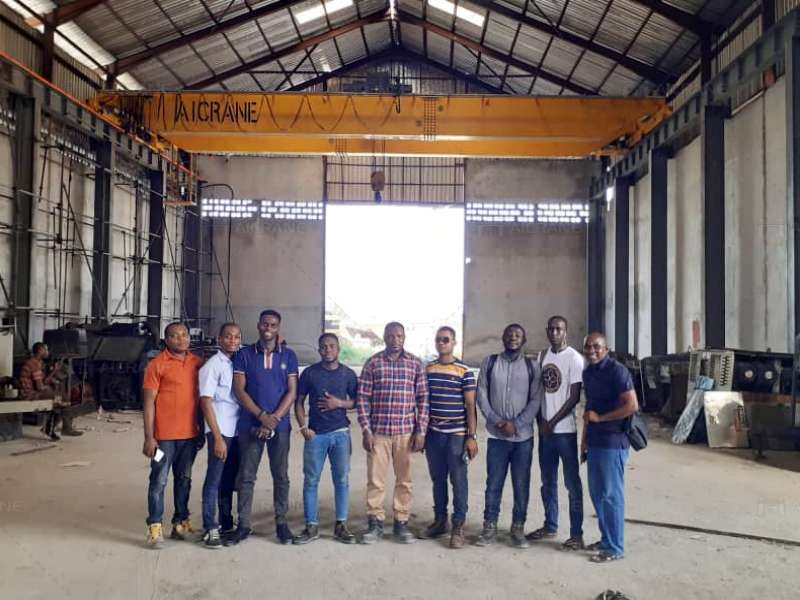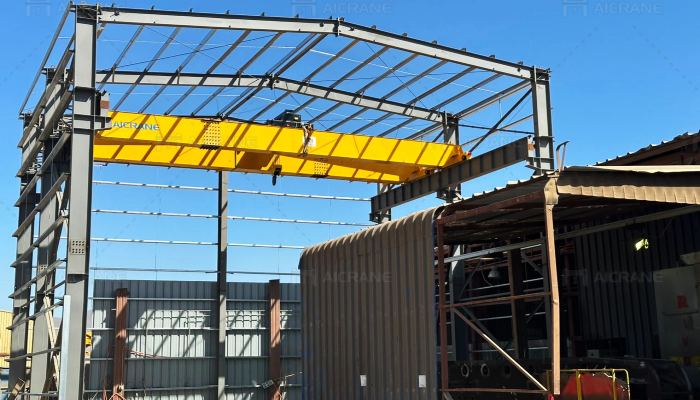In the world of industrial operations, efficiency, safety, and precision are paramount, especially when dealing with heavy loads and complex material handling tasks. Electric Overhead Traveling (EOT) cranes are often integral to achieving these goals, and their customization allows businesses to meet specific operational challenges. EOT crane manufacturers have recognized the diverse needs of industries ranging from construction and manufacturing to steel mills and warehouses. This has led to the development of custom solutions tailored to meet the unique demands of each project, providing more reliable and efficient material handling solutions.
This article explores how EOT crane manufacturers offer customized solutions to address complex material handling needs and why businesses should consider tailored cranes for optimal performance.

What is an EOT Crane?
An EOT crane, or Electric Overhead Traveling crane, is a type of overhead crane commonly used in industrial environments to lift and transport heavy materials across large areas. Unlike other cranes, EOT cranes run on an overhead rail system, allowing them to travel horizontally across a facility, making them ideal for long-distance lifting and material handling. The key features of an EOT crane include:
- Bridge structure: This is the horizontal component that spans the workspace.
- Hoist: The device used to lift and lower the load.
- Trolley: A mobile unit that moves along the bridge and carries the hoist.
- Electric-powered motors: Used to drive the crane’s movements for both lifting and traveling.
These cranes are primarily used in settings where large, heavy loads must be moved across an area, such as factories, warehouses, construction sites, and shipping yards.
Why Customization Matters in EOT Cranes
Every industrial operation has its own set of challenges when it comes to material handling. For some companies, a standard EOT crane may not meet all their needs in terms of capacity, reach, speed, or space constraints. Custom EOT cranes are designed to overcome these challenges by tailoring key features to a specific environment. Here are some reasons why customization is so important:
1. Handling Unique Loads
Different industries handle a variety of materials that vary significantly in size, weight, and shape. For example, a steel mill might need a crane capable of lifting large, heavy steel beams, while a warehouse may need a crane designed to move pallets of various goods. Custom EOT crane manufacturers can design cranes with specific hoists, lifting capacities, and attachments to cater to the type of load being handled. Specialized hooks, magnets, and clamshells can be added to ensure precise handling of materials, improving efficiency and safety.
2. Space Constraints
Many industrial facilities operate in tight spaces, making it difficult to implement standard overhead crane systems. Custom EOT cranes can be designed with compact specifications, ensuring they fit within the space available. Manufacturers can adjust the bridge span, lifting height, and clearance to suit the unique dimensions of the workspace, ensuring that the crane operates efficiently without taking up unnecessary space.
3. Enhanced Lifting Capacity and Speed
Some operations require cranes that can lift heavier loads or work faster than a standard model. In these cases, manufacturers can adjust the crane’s lifting capacity, motor power, and speed to meet specific operational needs. For instance, a custom EOT crane can be engineered with stronger girders, higher-rated hoists, or specialized motors to handle very heavy loads, such as large machinery, or to operate at faster speeds for increased throughput.
4. Safety Features
In certain industries, such as oil and gas or mining, handling hazardous materials or working in dangerous environments requires specialized safety features. Custom EOT crane manufacturers can integrate safety systems tailored to these environments. For example, overload sensors, anti-collision systems, and emergency stop functions can be added to ensure operator safety and prevent accidents. Manufacturers can also incorporate features that protect the crane from environmental hazards like corrosive elements or extreme temperatures.
5. Increased Efficiency and Automation
Many modern operations seek to increase efficiency by integrating automation into their material handling systems. Custom EOT cranes can be designed with automated controls that reduce the need for manual operation. Features like load sensing, automated hoisting, and real-time performance monitoring can improve productivity while also ensuring precision in material handling. Customization in automation ensures that single girder and double girder bridge cranes work seamlessly with other automated equipment in the facility, creating a more cohesive and efficient workflow.

Benefits of Custom EOT Cranes
- Optimized Performance: A custom EOT crane is designed to meet specific operational requirements, which enhances its performance. Whether it’s increasing lifting capacity, improving precision, or adapting to complex load handling, custom solutions can ensure the crane meets its intended purpose.
- Cost-Effectiveness: Although the initial investment in a custom EOT crane may be higher than a standard model, the long-term cost benefits are significant. A crane that’s tailored to a specific task can operate more efficiently, reducing wear and tear, maintenance costs, and downtime.
- Improved Safety: Custom EOT cranes come equipped with safety features tailored to the environment, which minimizes the risk of accidents, protects employees, and complies with industry regulations.
- Flexibility and Scalability: As business operations grow, customized EOT cranes can be upgraded or adapted to new tasks. Whether expanding capacity or adding new functions, customized cranes can evolve with the business.
Selecting the Right EOT Crane Manufacturer
When choosing an EOT crane manufacturer, it’s essential to look for a company with expertise in providing customized solutions. The best manufacturers understand the unique needs of each industry and work closely with clients to design cranes that address specific challenges. Considerations for selecting a manufacturer include:
- Experience and Reputation: A reputable manufacturer with a strong track record of producing reliable and durable cranes is essential.
- Customization Capabilities: The manufacturer should have the ability to design cranes that meet specific requirements for load handling, space limitations, and safety needs.
- After-Sales Support: Choose a manufacturer that offers robust maintenance services and technical support to keep the crane in top working condition.
Conclusion
EOT cranes are indispensable in many industries, and custom solutions provided by experienced manufacturers allow businesses to address complex material handling needs with precision and efficiency. Whether it’s adapting to unique load requirements, overcoming space constraints, or integrating automation, custom EOT cranes can significantly enhance productivity, safety, and operational efficiency. By working closely with the right manufacturer, businesses can design and implement the perfect crane solution for their specific needs, leading to improved results in the long term.
